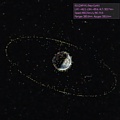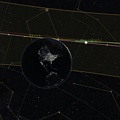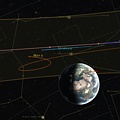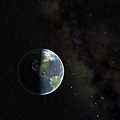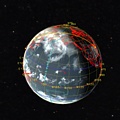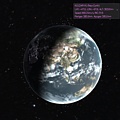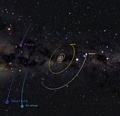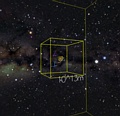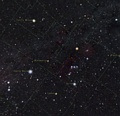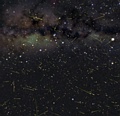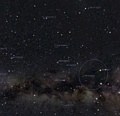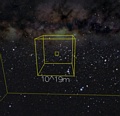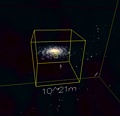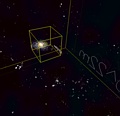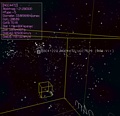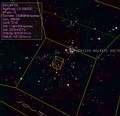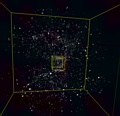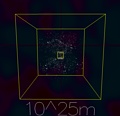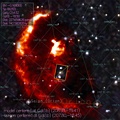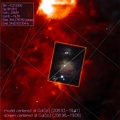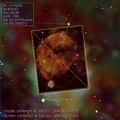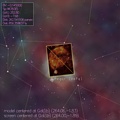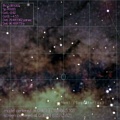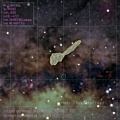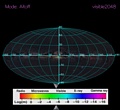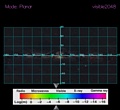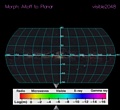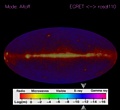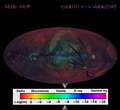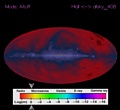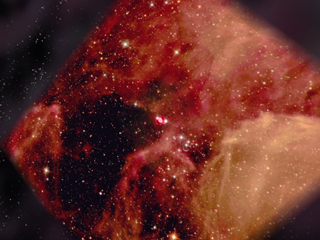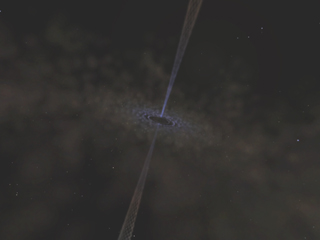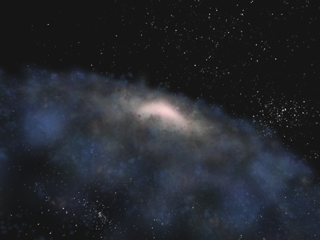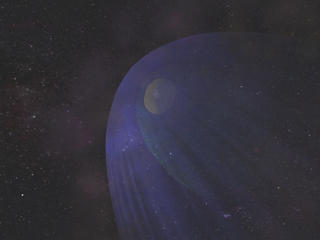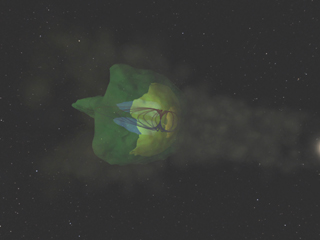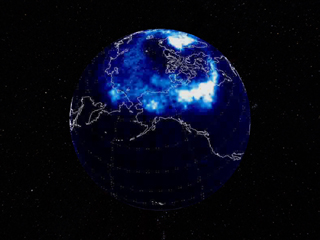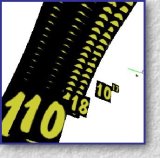
|
A Transparently Scalable Visualization Architecture for Exploring the Universe
Chi-Wing Fu and Andrew J. Hanson |
Abstract
- Modern astronomical instruments produce enormous amounts of three-dimensional data describing the physical Universe. The currently available data sets range from the solar system and nearby stars to the entire Milky Way, including the interstellar medium and extrasolar planets, and extend out to include galaxies billions of light years away. Because of its gigantic scale and the fact that it is dominated by empty space, modeling and rendering the Universe is very different from modeling and rendering ordinary three-dimensional virtual worlds at human scales. Our purpose is to introduce a comprehensive approach to an architecture solving this visualization problem that encompasses the entire Universe while seeking to be as scale-neutral as possible. One key element is the representation of model-rendering procedures using power scaled coordinates (PSC), along with various PSC-based techniques that we have devised to generalize and optimize the conventional graphics framework to the scale domains of astronomical visualization. Employing this architecture, we have developed an assortment of scale-independent modeling and rendering methods for a large variety of astronomical models, and have demonstrated scale-insensitive interactive visualizations of the physical Universe covering scales ranging from human scale to the Earth, to the solar system, to the Milky Way Galaxy, and to the entire observable Universe.
Contents
-
Part 1: Depth Rescaling Method
Part 2: Star Rendering Results
Part 3: A Powers-of-Ten Journey
Part 4: Applications developed from the Architecture
Part 5: Animation Produced from the Architecture
Part 1: Depth Rescaling Method
-
The following images demonstrate the rendering of scenes with very
large spatial range. Each sub-figure contains two views; The
screen view on the left shows the rendering result while the
depth buffer view on the right plots the corresponding depth
buffer in 3D. Textures on the polygons label their powers-of-ten
distances from the world origin.
The Program Interface (experiment the PSC Module)
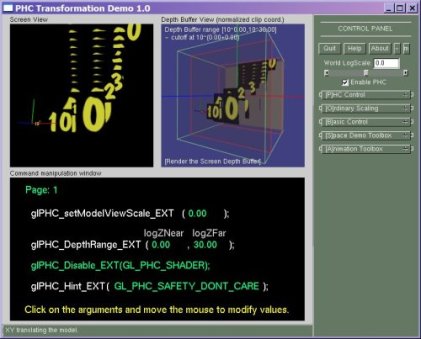
UI Description:
Depth Buffering Error with Bare Rendering Depth Buffering Error Corrected 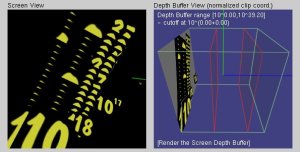
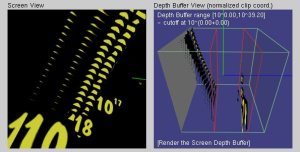
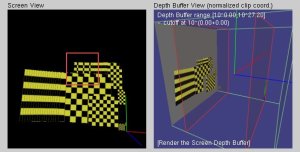
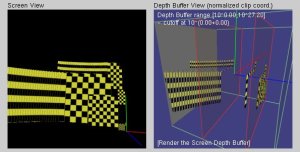
Walkthrough: from 10E-80 to 10E+80 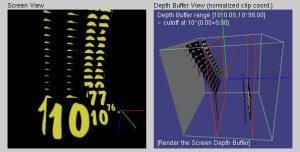
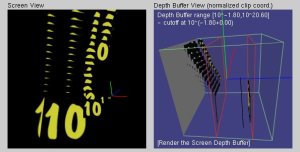
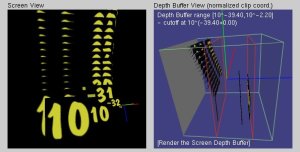
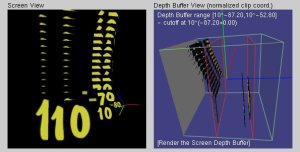
With Linear Cutoff Region Without Linear Cutoff Region 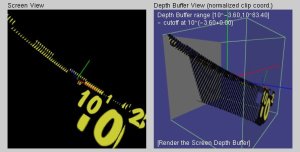
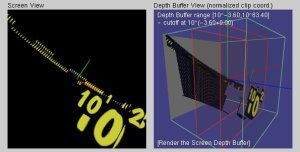
Part 2: Star Rendering Results
- The Interface for Image Registration: Photograph against Star data
set
-
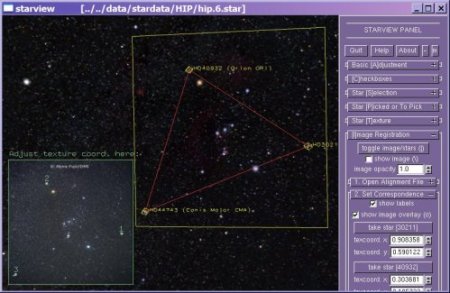
-
Comparing photographs and our renderings. Note that we do not simulate zodiacal light and counter-glow, and the Hipparcos data does not have all the stars shown in photographs ((c) AAO/ROE, photographs courtesy David Malin).
Orion The Big Dipper Canis Major 
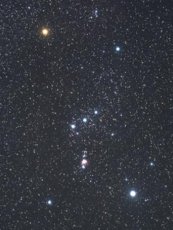
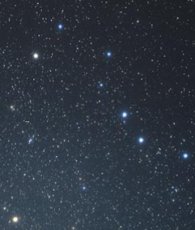
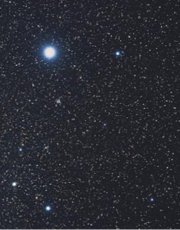

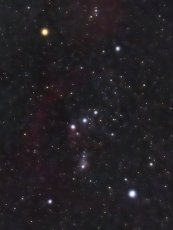
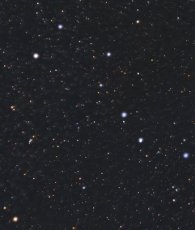
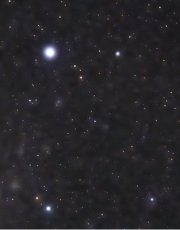
Part 3: A Powers-of-Ten Journey
-
The following images demonstrates a powers-of-ten journey across
the Universe from Earth to extra-galactic scale. To reveal the
depth buffer utilization, we apply the same presentation style as
above and plot the depth buffer of the screen view on the right.
Note that for efficiency in large-scale rendering, we turn off
the near safety region in the depth rescaling process.
Note:
- Links to related data sets are provided in the captions below.
- The Powers-of-ten webpage at Eames Office.
| 107m |
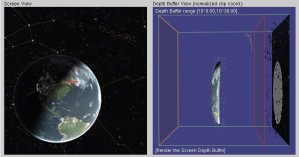 |
108m |
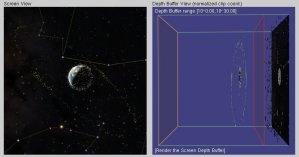 |
| Intl. Space Station over the Earth |
Satellites surrounding the Earth (Data source: NORAD Element sets) |
||
| 1012m |
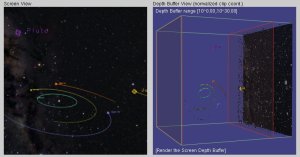 |
1013m |
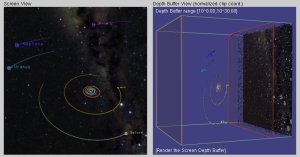 |
|
The Solar System (inner planets) (Data source: New JPL Long Ephemeris) |
The Solar System (outer planets) (Data source: All-Sky Milky Way Panorama) |
||
| 1017m |
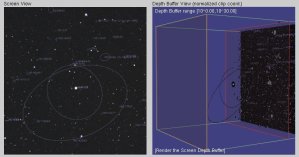 |
1018m |
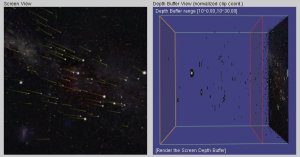 |
|
A Multi-Planet Solar System (HD95128) (Data: California & Carnegie Planet Search) |
Pleiades (visualizing space velocity of stars) (Data source: The Hipparcos Catalogue) |
||
| 1018m |
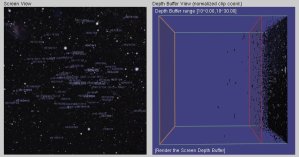 |
1018m |
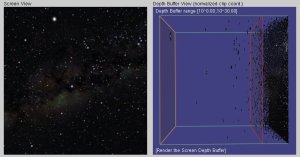 |
| Extra-solar Planets | Interstellar space | ||
| 1018m |
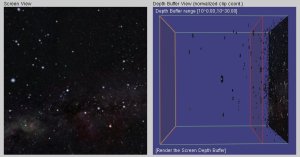 |
1021m |
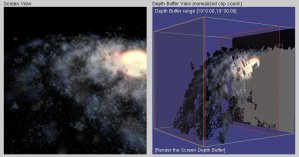 |
| Interstellar space | Spiral Arm of the Milky Way Galaxy | ||
| 1022m |
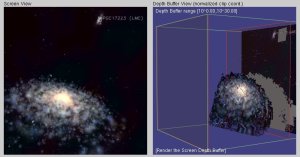 |
1023m |
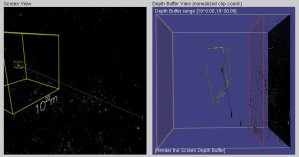 |
|
The Milky Way and Large Magellanic Cloud (Data source: the Milky Way Model) |
The Local Group: the Milky Way Galaxy and the Andromeda Galaxy |
||
| 1024m |
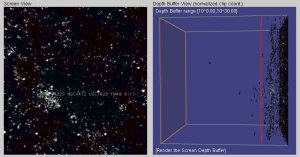 |
1025m |
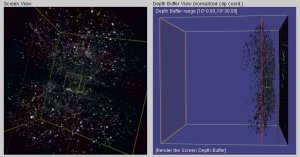 |
| The Virgo Cluster |
The Galaxies Catalog (Data courtesy of R. Brent Tully) |
Part 4: Applications developed from the Architecture
Earth Day -- presents the spatial environment surrounding the Earth, including about a thousand Earth-orbiting satellites and planetary trajectories in the sky.
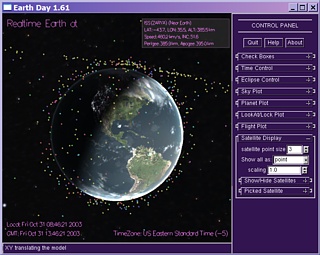
|
|
Starview -- presents the spatial environment from the Solar system to interstellar space and we can visualize numerous stellar characteristics: Constellation lines, labels, and boundaries, space velocity trails, position and velocity errors of stars, orrery of the solar system, extra-solar planets, etc.
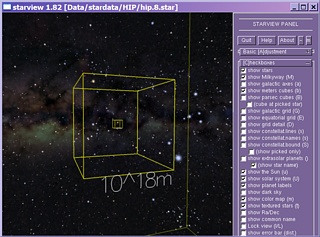
|
|
Galaxy View -- depicts the space of galaxies. It supports the rendering of the Milky Way Galaxy using a particle model, selection of individual galaxies and display of galaxy properties, Equatorial, Galactic, and Supergalactic grids, CMBR (Cosmic Microwave Background Radiation), etc.
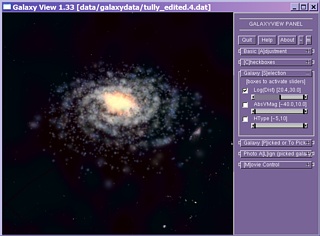
|
|
Skyalign -- The motivation for skyalign is that most images and photographs we have obtained from the astronomy community do not come labeled with accurate sky coordinates; thus, whenever we want to put an image like this into an animation relative to other objects in the sky, we need to know roughly where the image is in the sky. The skyalign tool provides an interface for accomplishing accurate alignment.
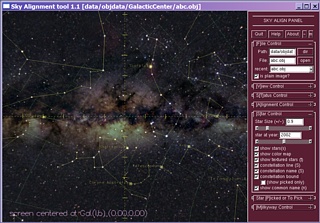
|
|
Spectral Viewer -- visualization of the multi-wavelength sky from the Earth's perspective by employing various cartographic topologies like the Aitoff projection.
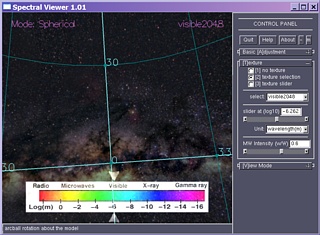
|
|
Part 5: Animation Produced from the Architecture
- An animation has been produced to depict the local view of interstellar objects around our solar system and reveals to us the interstellar space through which our Sun travels. The current version starts at the Solar system scale, and then moves out to see the whole Milky Way Galaxy and to review the 1987a-supernova explosion in the LMC. Then, we return to the interstellar environment and fly around the supernova remnant Loop I through the edge of which our Sun is traveling. Then, we fly closer to the rim of the solar system and review the Heliopause structure, which is generated by the force of the Solar wind against the interstellar medium. This Heliopause structure acts like a shield pushing away the interstellar medium originating from Loop I or other dust clouds so that we can move across interstellar space safely. This animation was a collaboration work with SGI for a planetarium project and it will soon be distributed as videos as well (details removed due to blind review).
Download
- Manuscript:
PDF version (~6.5 MB)
and journal version at (IEEE Xplore)
- Animation (From Earth to Galaxies):
AVI format (~43.7 MB).
(with background music)
BibTex
@article{fu-2007-transparent,author = {Chi-Wing Fu and Andrew J. Hanson},
title = {A Transparently Scalable Visualization Architecture for Exploring the Universe},
journal = {IEEE Transactions on Visualization and Computer Graphics},
year = {2007},
month = {Jan.-Feb.},
volume = {13},
number = {1},
pages = {108--121},
}
